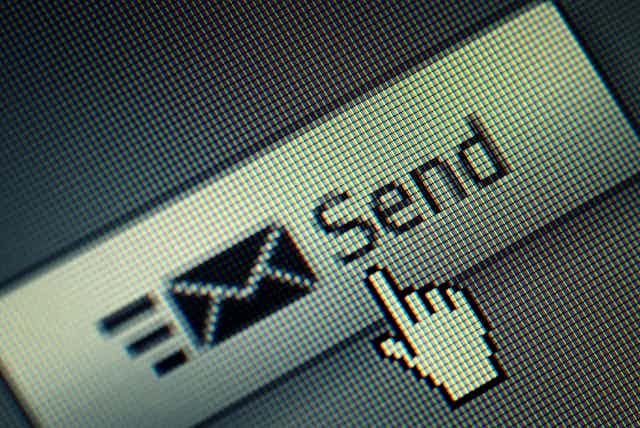
Emails are ubiquitous in a modern, globalised workforce. However, a well-crafted email can make the sender appear approachable and competent, while a poorly constructed one is less persuasive, and leaves recipients less willing to comply with the request.
Alongside making requests and providing information, emails help us build rapport in the workplace and long-term business relationships. So it’s unsurprising that there’s a sizable market for help with email etiquette.
An internet search for “email etiquette” generates 433,000 results, while a search for books on email etiquette fetches 76 titles (on Amazon.com). However, the advice we get is often hazy, lacking justification, and may even be contradictory at times.
A 2003 study suggested that these different opinions on what to write in an email will converge over time, and that rules will emerge. But 14 years later, we still haven’t gone very far in producing or sticking to a standard.
Why there is no standard when it comes to email etiquette
The problem is emails are all written for very different purposes, including personal messages and invitations, advertising and customer inquiries, team announcements and company newsletters among other things. The setting also changes; what is acceptable in an academic’s emails is different from business emails.
The norms in emails also vary between internal and external communication, according to profession and across cultures.
It doesn’t help either that the conventions of email communication are constantly evolving. If there isn’t a one-size-fits-all template that we can apply, what can we rely on to guide email writing?
It’s all about the context
If you look at the context for each email it can give you a guide as to what to write. Take for example greeting and closing an email.
A common point of disagreement between commentators is the need for proper greetings and closings. On the one hand, our guidebooks tell us we should always include an appropriate greeting, while on the other, the emails we often see in the workplace seem to contain no greetings at all.
Openings and closings in emails are used to establish the relationship between the sender and the recipient, so this should be the first consideration. Employees who are addressing a distant colleague or someone with higher authority, for example, are more likely to include a greeting.
However, the relationship between sender and recipient develops as emails form a chain of exchanges. Chances are that most of the internal emails we send are linked to an earlier phone call or other emails. In that case the relationship and context would have been well-established already.
These forms of quick exchanges without a greeting or closing resemble an ongoing spoken conversation stretched over a few emails. So any further greetings would seem repetitive and excessive.
However, a sender may still choose to include greetings and closing expressions such as “Dear Mr X” and “Kind regards” to emphasise or downplay the difference in power or to put some distance between themselves and their recipient. Conversely, inclusive salutations such as “Hi Team” or “Hi everyone” and empathetic closes such as “Well done” could help to invoke solidarity among your coworkers and trigger them to act.
It’s also useful to consider the role that the email plays in the overall activity. Internal emails are often short and succinct, because they are sent to provide instructions or information as part of the daily workflow.
Once the purpose of such messages is identified, details can be summarised in point form and abbreviations, so your team members can easily retrieve the information they need without wading through lines of pleasantries. Keeping the message brief also makes it easier to read on smartphones.
However, when it comes to conducting delicate negotiations with customers, when it is necessary to build trust, assert power and establish relationships, emails would have to be longer. Senders would have to couch sensitive messages in formal language and stock phrases, to strengthen their authority by making the message sound impersonal.

To smiley face or not?
Guidebooks also disagree on the use of newer features that deviate from more traditional forms of writing, such as emoticons. However, emoticons provide a useful way to manage solidarity by softening requests and minimising impositions at the workplace.
So let’s face it – regardless of what the guidebooks say, people are going to continue using them. This is because emails lack the non-verbal cues that we rely on in face-to-face interactions, such as facial expressions, and this creates the potential for ambiguity and uncertainty in how messages are interpreted. Emoticons are used to disambiguate the tone of a message where there are more than one way to interpret it.
However, senders may also appropriate and exploit the digital features in emails to pursue complex agendas. While the “CC” function ostensibly provides accountability and allows monitoring of work processes, senders may choose to copy in a colleague in a power-play to strengthen their authority and put pressure on the recipient.
It’s worth mentioning that in these examples, the email senders are not simply observing a set of rules for each context; they are actively shaping their context with each choice they make.
The things we choose to do or not do with emails are social actions. As a part of human interaction, emails are as nuanced and complex as the social world we write them in. It is unlikely that we can rely on a checklist or quick-fix rules to get them right, as appealing as that may sound.

